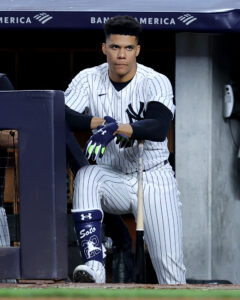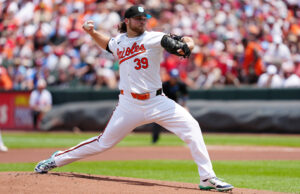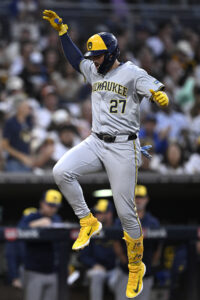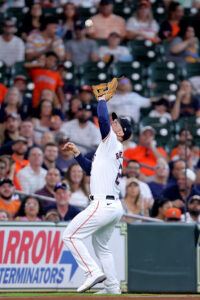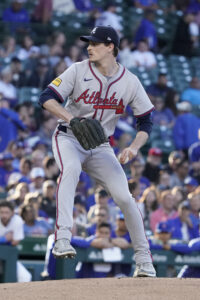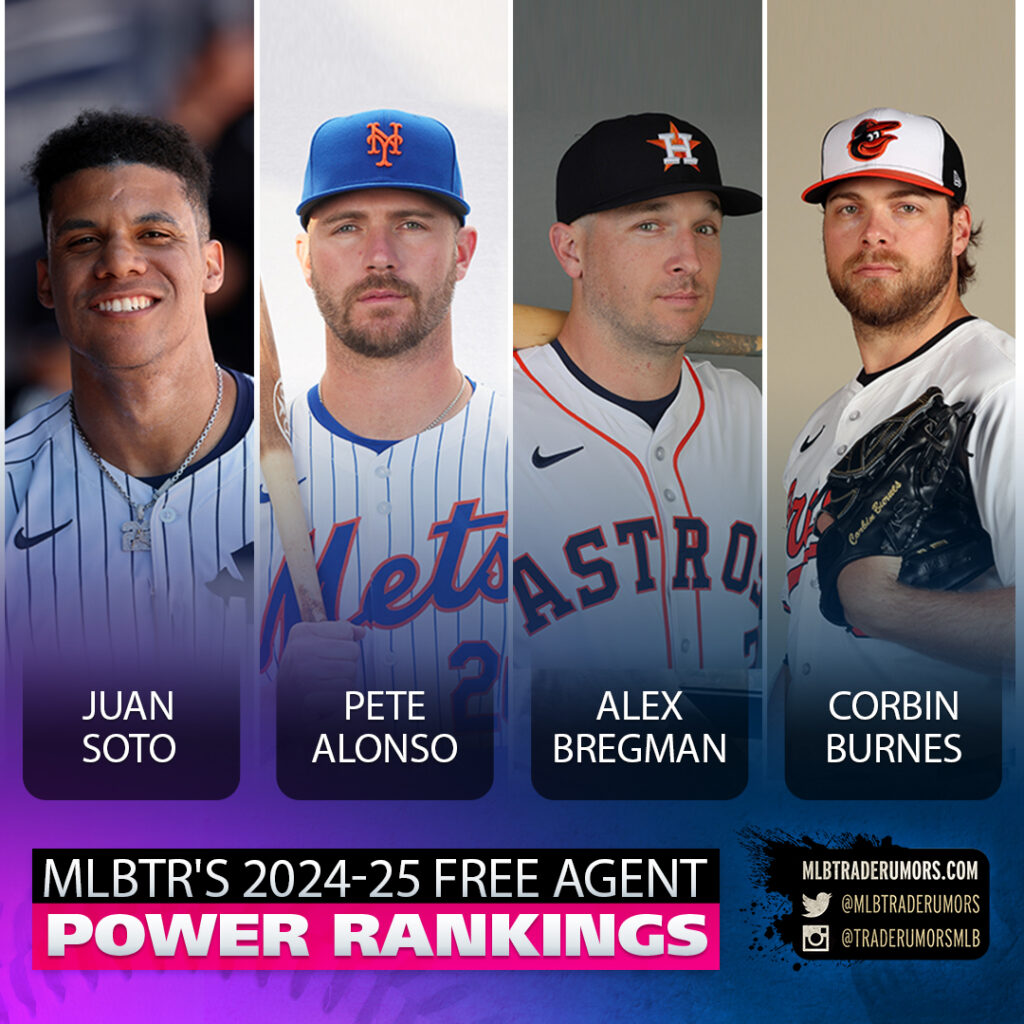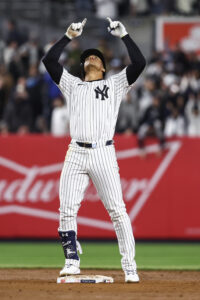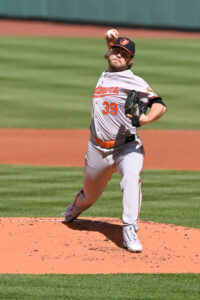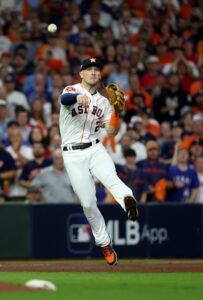Since Opening Day, MLBTR has taken periodic looks at the upcoming free agent class. This is our third (and likely final) installment of our in-season power rankings. Players still have a month and potential postseason play to move things around, yet the class is coming into focus.
There’s no suspense at the top of the list. The 1-2 have remained unchanged from start to finish (although the gap between 2 and 3 has closed in the past few weeks). This is our attempt to capture a player’s earning power, so age is big factor. This is not strictly a list of the best players in the class, though talent is obviously the starting point.
Our power rankings are compiled collaboratively. We worked with Darragh McDonald — with input from MLBTR founder and owner Tim Dierkes — for this installment. Players with opt-out clauses and player options are eligible for the list. Stats are through play on August 29.
- Juan Soto, OF, Yankees
Soto has been the clear top free agent in the class for years. He has been on track for a record-setting deal (in terms of total guarantee, AAV or both) for a while. To top it off, Soto is amidst arguably his best season during his platform year. He has already established a new career mark in home runs. He’s going to hit 40 for the first time and could top 45 by year’s end. Soto is hitting .291/.421/.590 on the season. This will be his fifth consecutive season with more walks than strikeouts.
Approaching his 26th birthday, Soto is ostensibly at the beginning of his prime. There’s not much room for him to get better, but a signing team could realistically expect another seven to 10 years of elite offensive production. Soto’s league-best strike zone awareness should age gracefully. It’s essentially unheard of for teams to be able to sign a player who is on an inner circle Hall of Fame trajectory with another four full seasons before he turns 30. Every high-payroll organization should be involved.
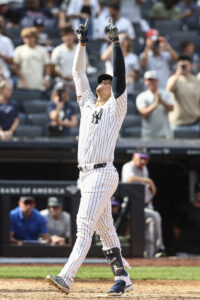
While Soto generally doesn’t provide a ton of defensive value, he’s having a decent season in that regard. He has a career-high five defensive runs saved in nearly 1100 innings. Statcast has him right around average. Soto could move to designated hitter in the latter half of a deal that exceeds a decade but shouldn’t have any issue sticking in right field for the foreseeable future.
Soto turned down a reported $440MM extension offer from the Nationals a few years ago. His camp subsequently rebuffed overtures from the Padres and Soto shut down any chatter about a potential midseason deal with the Yankees in June. He’ll be three years younger than Shohei Ohtani was during his free agency. Soto isn’t likely to accept a deal with the kind of deferrals that Ohtani took, but he should handily beat the approximate $461MM net present value of the Ohtani contract. He should top half a billion dollars and it wouldn’t be surprising if his camp at the Boras Corporation were aiming for something close to or north of $600MM and/or multiple opt-out chances.
2. Corbin Burnes, SP, Orioles
Burnes has been the #1 pitcher in the class throughout the summer. He has finished in the top 10 in Cy Young balloting in four straight years, highlighted by his ERA-leading 2021 season in Milwaukee. Burnes is having a good year, working to a 3.23 earned run average across 164 1/3 innings. His production has slipped coming out of the All-Star Break though. He carried a 2.43 ERA into the Break but is allowing more than five earned runs per nine in 45 2/3 innings in the second half.
The recent results are the continuation of a slightly alarming trend. Burnes was among the game’s top two or three strikeout artists a couple seasons ago. That has gone in the wrong direction over the last two years. After fanning north of 30% of opponents in each season from 2020-22, his strikeout rate dipped to 25.5% last year. It is down three more percentage points during his first (and potentially only) season in Baltimore. Burnes had a 23.3% strikeout rate before the Break and is fanning a slightly below-average 20% of batters faced within the past six weeks.
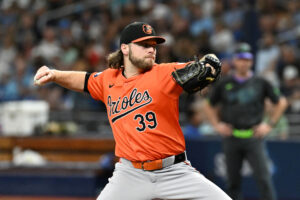
There hasn’t been an obvious corresponding downturn in his stuff. Burnes is averaging a personal-high 95.5 MPH on the cutter that serves as his primary pitch. The speed on his breaking pitches is in line with his career marks. Yet as his velocity has picked up throughout the season, the whiffs have dropped. Opponents have jumped all over his cutter and curveball in uncharacteristic fashion this month.
None of this means Burnes is no longer a good pitcher. He’s in the top 30 among pitchers (minimum 100 innings) in both ERA and swinging strike rate. Burnes is averaging over six innings per start. He hasn’t had a non-illness related stint on the injured list in four years. There’s some amount of concern with every pitcher in the class and Burnes provides the best combination of durability track record and ace upside. Still, teams will need to determine how concerned they are about his two-year dip in swinging strikes when considering whether to meet an asking price that’ll very likely remain north of $200MM.
3. Alex Bregman, 3B, Astros
Early this season, Bregman looked headed for a lost year. The former No. 2 overall pick was hitting .201/.270/.264 as deep into the season as May 12 — a span of 160 plate appearances. At that point, it was fair to wonder whether he’d be able to turn his season around.
Bregman has done that in spades. Over his past 388 plate appearances, he’s hitting .284/.335/.518 with 20 homers, 20 doubles, two triples and his typical above-average glovework at the hot corner. His overall season batting line is still skewed by that ugly start, but for the past 87 games, Bregman’s 3.6 wins above replacement (per FanGraphs) rank 15th in all of baseball.
It’s worth emphasizing that even throughout this turnaround, however, Bregman isn’t quite the same superstar-level hitter he once was. He’s been 42% better than average during this run, by measure of wRC+. That’s still great, but it’s a ways shy of the elite levels of offensive output he delivered in 2018-19, when he finished fifth and second in AL MVP voting, respectively. Bregman’s once outstanding plate discipline has faded this season as well. After walking in 13.8% of his plate appearances from 2018-23, he’s down to 6.8% in 2024. It’s the first time he’s had a below-average walk rate since his 49-game rookie season back in 2016.

Some teams might be turned off by Bregman’s batted-ball data as well — an issue that harmed Cody Bellinger’s free agency last offseason. Though Bregman has long been a plus hitter, he’s never made loads of hard contact. He’s sitting on an 89.4 mph average exit velocity and 41.4% hard-hit rate this year. Both marks are only a bit higher than the league average, but they’re higher than Bregman’s career 88.8 mph and 37.8% marks in those respective categories.
Some might think Bregman to be a product of Minute Maid Park’s friendly dimensions. The short left field porch, the Crawford Boxes, sits only 315 feet down the line. That’s surely benefited Bregman throughout his career and perhaps even informed his swing mechanics and approach at the plate. However, Bregman also flat-out hits wherever he is. The difference between his rate stats at home (.271/.371/.475) and on the road (.275/.363/.489) are negligible. If anything, he’s hit for slightly more power on the road than at home.
Even setting aside his ’18-’19 peak, Bregman has been a consistently standout player in the five seasons since. He’s batted .261/.352/.443 during that time, shown elite contact skills (12.6% strikeout rate) and played above-average defense at an important position. Bregman never settled in as a perennial MVP candidate, but he’s averaged 25 homers and better than four wins above replacement (4.4 bWAR, 4.8 fWAR) per 162 games since 2020. Teams are going to covet his hard-nosed personality as well; one general manager who’d like to sign Bregman told ESPN’s Jeff Passan that he would “completely change our clubhouse for the better.”
The MLBTR team is perhaps more divided on Bregman’s earning power than any other player on this list, but we generally agree there’s a clear nine-figure deal to be had here. Heading into his age-31 season significantly limits him, however. The question is whether the market views him with some trepidation and tries to stick in the low $100MMs or whether interest is bullish enough to push Bregman close to the $200MM range — despite minimal precedent for such a contract at his age. How he finishes the season will be a key factor.
4. Willy Adames, SS, Brewers
Adames has rebounded from his worst offensive showing in Milwaukee. He slumped to a .217 average with a .310 on-base mark a year ago, but he’s up to a .252/.337/.451 slash over 572 plate appearances this season. Adames has already matched last year’s total of 24 homers and has a shot to get to 30 longballs for the second time in his career. That’s not easy to find at the infield’s toughest positions. Among primary shortstops, only Corey Seager and Francisco Lindor have more homers than Adames’ 79 over the past three seasons.
He pairs that above-average power with a patient approach. Adames has walked in more than 11% of his plate appearances in consecutive seasons. He doesn’t have great pure contact skills and his strikeout rate has spiked over the past couple months. While the whiffs keep Adames a tier below the game’s elite infielders, he’s an above-average regular who routinely draws praise from teammates and coaches for his leadership and clubhouse presence.
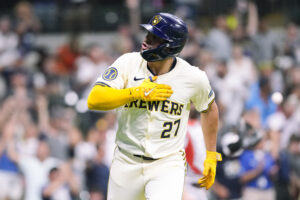
Traditionally, Adames’ glove is one of his calling cards. He has been a plus defender for the bulk of his career. This year’s defensive performance has been erratic. Statcast has graded him as an average defender, while Defensive Runs Saved has been very down on his work (12 runs below average). It’ll be his first season with a subpar DRS since his 2018 rookie year.
Adames has committed 17 errors this year, fourth-most among shortstops. Statcast still credits him with plus range and arm strength. He’s not showing signs of physical decline. The walk year isn’t an ideal time for Adames’ defensive performance to crater, but this season’s poor numbers seem like more of an aberrant spike in errors than an indication that he’s losing athleticism that’ll force him off the position.
As he approaches his 29th birthday, Adames has pulled away from Ha-Seong Kim as the top shortstop in the class. He’s far better than anyone who was available in last winter’s group of shortstops. Adames should beat nine figures and has an argument for a six- or seven-year deal that puts him in the $150MM+ range. Javier Baez, Trevor Story and Dansby Swanson all leveraged this general profile into strong contracts. None of those deals have worked out well, so perhaps teams will round down on Adames, but the market has thus far placed a lot of value in shortstops with power.
5. Blake Snell, SP, Giants *
Two months ago, Snell had fallen off this list. How things have changed. The two-time Cy Young winner is back. As MLBTR’s Steve Adams explored at greater length in a piece for MLBTR Front Office subscribers, Snell has been the best pitcher in baseball for two months. Since the start of July, he carries a 1.30 ERA with an MLB-best 37.1% strikeout rate through 55 2/3 innings. His 18% swinging strike rate over that stretch easily leads all pitchers with 40+ innings. He has reached 10 strikeouts in four of his last six starts. He followed up a career-high 15 punchouts against the Rockies on July 27 with an 11-strikeout no-hitter of the Reds in his first appearance of August.
Snell’s disastrous start to the year feels like a distant memory. He signed late and allowed more than a run per inning through his first 23 2/3 frames. He had two stints on the injured list related to left groin issues. Snell’s sheer dominance since returning from his second IL stay makes it seem like he simply wasn’t healthy for the first couple months.
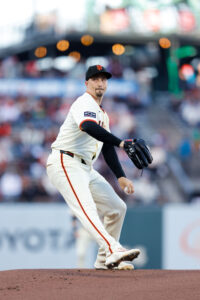
While Snell has been famously streaky throughout his career, few pitchers can match his highs. Over the last three seasons, he owns a 2.93 earned run average with a 32% strikeout rate over 387 innings. Even Burnes probably doesn’t have Snell’s ceiling at this point, though the left-hander has not been as consistent as the Baltimore ace.
Unless he suffers an injury in the next few weeks, Snell is a virtual lock to decline his $30MM player option for next season. He’ll return to free agency at age 32 and likely take another swing at the kind of deal that alluded him a year ago. Snell recently refuted (X link via Foul Territory) a report that the Yankees had offered him a six-year, $150MM deal last winter. It’s not clear what kind of money was on the table, but it wasn’t sufficient for Snell and his camp at the Boras Corporation to consider it preferable to the two-year guarantee that he ultimately signed with the Giants. He’ll try again without being tied to draft compensation and could take aim at a deal in the $150-200MM range.
6. Matt Chapman, 3B, Giants *
As with Snell, Chapman signed with the Giants late in the winter upon not finding a long-term deal to his liking. He started the year slowly, running a .266 on-base percentage through the season’s first month. Chapman has been fantastic since then, slashing .251/.349/.458 since the start of May. He’s up to a .244/.331/.440 mark with 21 homers across 562 plate appearances — offense that checks in 17 percentage points above league average, as measured by wRC+.
That’s par for the course for Chapman. While he’s been prone to significant swings in performance within seasons, his results at the end of the year tend to be consistent. He’ll hit around 25 homers with enough walks to offset a higher than average strikeout rate and middling batting average.
Chapman pairs that solid offense with some of the best third base defense in the majors. He’s a four-time Gold Glove winner who still rates as one of the game’s top glovemen. Chapman will play next season at 32, so his athleticism and defensive metrics might drop off within the next few seasons, but he’s one of the better all-around infielders in the majors right now.
The Giants have already opened extension talks with Chapman’s camp at the Boras Corp. He’s a Fullerton product who has a strong relationship with San Francisco manager Bob Melvin. Chapman looks likelier than anyone else on this list to sign an extension before free agency opens as a result. If he makes it to the open market, he could seek a five-year deal that exceeds $100MM.
7. Max Fried, SP, Braves
Fried established himself in the Atlanta rotation by 2019. He has been a consistent top-of-the-rotation presence since then. Over the past five-plus years, the 30-year-old southpaw has a 3.09 ERA over 139 starts. Fried hasn’t been quite as effective in the postseason, but he’s one of the biggest reasons for the Braves’ recent run of success.
The former seventh overall pick doesn’t miss bats at the level of a typical ace. He has a career 23.8% strikeout rate and has fanned 22.8% of batters faced this season. His 10.1% swinging strike rate is a hair below average. Fried excels in contact management. His 58.1% ground-ball rate is fourth among pitchers with 100+ innings. He has a five-year track record of suppressing hard contact. While Fried’s 93-94 MPH fastball isn’t overpowering, his secondary stuff (especially his curveball) is excellent.
The biggest concern with Fried is his recent injury history. A forearm strain cost him three months between May and August last summer. Fried spent a couple weeks on the injured list with ulnar neuritis coming out of the All-Star Break this season. He hasn’t pitched especially well since coming back, allowing a 5.26 ERA (albeit with a strong 27.7% strikeout rate) over his last 25 2/3 innings. It’s possible teams will have some trepidation about his arm health, but Fried has an argument for a deal in the Patrick Corbin ($140MM) or Carlos Rodón ($162MM) range if he finishes strong.
8. Jack Flaherty, SP, Dodgers *
If Fried offers consistency despite pedestrian strikeout totals, Flaherty is a more volatile upside play. The 28-year-old righty has some of the best bat-missing stuff in the majors. He has punched out 31.1% of batters faced behind a 13.6% swinging strike rate over 23 starts. He’s fifth in strikeout rate and 11th in whiffs among pitchers with 100+ innings. Flaherty has paired that with a career-low 4.8% walk rate, firing 135 frames of 3.07 ERA ball.
Excellent as his production has been this season, Flaherty is a year removed from posting a 4.99 earned run average between the Cardinals and Orioles. He has looked like a Game 1 starter at his best and a back-of-the-rotation arm at his worst.
Flaherty battled oblique and shoulder injuries between 2020-22, limiting him to 154 2/3 innings over that stretch. He has not been on the injured list in the last two years, yet that hasn’t silenced questions about his health. The Yankees reportedly pulled out of a preliminary deadline deal with the Tigers after identifying an undisclosed concern in his medical review. The Dodgers apparently didn’t share such concerns, as they sent prospects Thayron Liranzo and Trey Sweeney to Detroit thereafter.
Entering his age-29 season, Flaherty is one of the younger pitchers in the class. He doesn’t have the consistency of a $200MM arm but could land in the lower nine figures on a deal similar to Robbie Ray’s five-year, $115MM contract with Seattle.
9. Pete Alonso, 1B, Mets
The personification of the prototypical slugger, Alonso has been the second most consistent power hitter in the game since his 2019 debut. In that time, only Aaron Judge’s 225 home runs top Alonso’s 220 for the MLB lead. The Polar Bear simply mashes. He’s never hit fewer than 37 homers in a full 162-game season. He’s as durable as they come, never missing more than 10 games in a season since debuting, and the only two players with more plate appearances than Alonso since 2019 are Marcus Semien and Freddie Freeman. Teams know Alonso is likelier than most to be out there every day, and he’s assuredly going to hit for more power than nearly any of his peers.
On the other hand, Alonso will turn 30 in the offseason. He’ll receive and reject a qualifying offer in search of a multi-year deal. His defense at first base is not considered to be strong. Alonso walks at an above-average but not-elite clip. Paired with his low batting averages, that typically limits his on-base percentage to the .330 to .340 range.
None of those are glaring flaws on their own, but bundled together they could make for a concerning profile among today’s front offices. A 30-year-old slugger without defensive value who sports pedestrian OBP marks and is tied to draft pick compensation — that’s not a recipe for a mega-contract. Modern teams have been increasingly wary of paying a first-base-only profile late into their 30s — or even signing such players to truly long-term deals as well.
Freeman (six years, $162MM) and Paul Goldschmidt (five years, $130MM) both inked long-term deals beginning with their age-32 seasons. Alonso is younger but also not considered as complete a hitter as those two were when they signed. It’s easy to imagine Alonso and Scott Boras wanting to top Freeman, but Alonso could have a hard time climbing to such heights.
10. Anthony Santander, OF, Orioles
Santander’s been a quality power hitter for the Orioles for years now, but he picked the right time to take his game to another level. The 29-year-old switch-hitter popped 33 home runs back in 2022 but surpassed that mark weeks ago. He’s currently sitting on a career-high 38 home runs. A 40-homer campaign seems like a lock, and Santander could finish with 45 to 50 homers if he enjoys a hot September.
Even if this is a career year in terms of power output, Santander has proven himself a perennial 30-homer threat. He does damage from both sides of the plate, though he’s a more pure lefty hitter. Santander draws more walks, strikes out less often and is a generally well-rounded hitter from the left side. From the right side, he morphs into more of a three-true-outcomes slugger. It all balances out for steady production that any club would be happy to plug into the middle of its lineup.
As is usually the case, the impressive power profile isn’t without its flaws. Santander is limited to the outfield corners (plus some briefer cameos at first base) and doesn’t grade out as a plus defender anywhere. He’s a passable enough right fielder, showing above-average arm strength to go along with plodding range, but no one’s ever going to claim Santander is an elite defender. He’s a bat-first player who figures to slow down as he enters his 30s. It’s reasonable to think that by the second half of a contract, he’ll be a clearly below-average defender in the outfield.
Even at the plate, Santander is a free-swinger who doesn’t walk like the quintessential slugger. He has a slightly above-average walk rate from the right side of the dish but is below-average from the left side. Overall, he’s walked in just 7.1% of his career plate appearances, including a below-average 8% in 2024. Santander doesn’t strike out much (20.7% career, 19.4% in 2024), but he’s still prone to low OBPs because he broadly lacks patience.
Much of what was said regarding Alonso applies here, too. Santander has more defensive value as a currently playable outfielder but a less consistent track record of 40-homer power. But like Alonso, he’ll reject a qualifying offer and head into free agency as a 30-year-old slugger with OBP questions and middling defensive contributions. While Alonso’s regular display of 40-homer pop makes him feel like a lock to reach five years, Santander could be hard-pressed to find that length. A high-AAV three- or four-year contract will likely be in play as one of the best non-Soto power bats on the market.
* Denotes ineligible for qualifying offer
Honorable Mentions (listed alphabetically): Cody Bellinger *, Gerrit Cole *^, Paul Goldschmidt, Teoscar Hernández, Clay Holmes, Ha-Seong Kim, Sean Manaea, Tyler O’Neill, Nick Pivetta, Jurickson Profar, Max Scherzer *, Luis Severino, Justin Verlander *, Christian Walker
^ Cole has the ability to opt out of the final four years and $144MM remaining on his deal at season’s end. If he triggers the opt-out, the Yankees can void it by exercising a $36MM option covering the 2029 season — bringing their commitment to five years and $180MM. MLBTR explored the Cole situation in detail in a post for Front Office subscribers this week.
